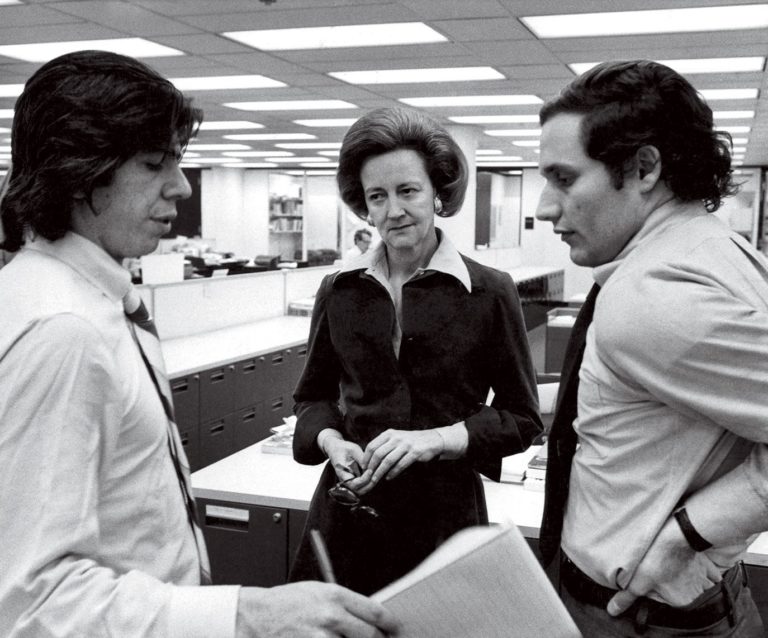Categories
Blog Bob Woodward
Coming of age as a young journalist is challenging during any time period, but it feels especially fraught in 2018. Some of the profession’s most respected names, from New York Times Executive Editor Dean Baquet to Washington Post Editor Marty Baron, have lamented the lack of trust in the mainstream news media and the “out of control” attacks on the press from the Trump administration.
Journalists are rightly contemplating innovative ways to bridge the gap between readers and reporters and increase awareness of how we do our jobs. But after listening to renowned Post journalist Bob Woodward speak on American University’s campus on Oct. 16, I was reminded of the ways in which we should embrace the reporting techniques of the past as we cover the challenging issues facing our communities.
 Woodward, who was at AU for a business leadership event by the Young President’s Organization, said it was a “real cold shower” for him to realize that he had to go back to old methods of reporting to tell the story he wanted to in “Fear,” his blockbuster book on the internal workings of the Trump administration.
Woodward, who was at AU for a business leadership event by the Young President’s Organization, said it was a “real cold shower” for him to realize that he had to go back to old methods of reporting to tell the story he wanted to in “Fear,” his blockbuster book on the internal workings of the Trump administration.
While reporting for the book, Woodward recalled calling a source at 11 p.m. and contemplating if he should ask to visit the person’s home. When he made the request, the source responded with indignation, but eventually allowed Woodward to come over. They ended up talking through the night until Woodward headed home before the sun came up.
“It was a fork in the road moment because at 11 o’clock, I was saying to myself, ‘Why am I not going to bed? Why am I doing this?’ ” Woodward said. “[But] I just kind of picked up the phone and said, ‘let’s do it.’”
In addition, Woodward said his decision to not let sources go off the record was part of the old-school reporting mentality he adopted for the book. Woodward only allowed interviewees to go on deep background, where he would use their stories and quotes but without any attribution.
Woodward argued that White House sources have gone off the record too liberally, leaving reporters unable to tell the true stories of what is happening within the administration.
He added that the Trump era requires people working in the media, as well as other industries, to re-evaluate how they do their jobs.
“Working on Trump … I discovered that I had really become lazy,” Woodward said. He said was not using “the old technique that I learned from Carl Bernstein, going and knocking on doors at night to visit people.”
So he re-dedicated himself to the methods he employed during his coverage of the Watergate scandal, and in the process realized how important those techniques were to finding the stories he sought to tell.
“Not only can we stand to know the truth, but we have to know the truth,” Woodward said. “That’s the function of not just the media or the First Amendment, but that’s the whole system.”
As journalism schools continue to evolve and create more courses to develop students’ digital and multimedia skills, I hope that young journalists and the professors who teach them will keep Woodward’s ideas in mind. Reporters are expected to do more with less in the 21st century, but we can’t lose sight of the essential techniques that push us to ask tougher questions and hold powerful institutions accountable.
Many journalism students inherently know this — I know, because I am one. But it doesn’t hurt to have an icon like Woodward remind me.





